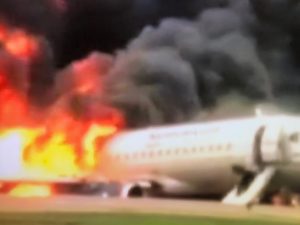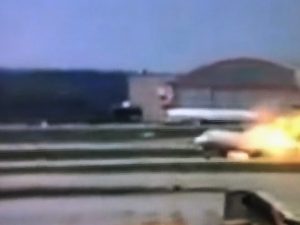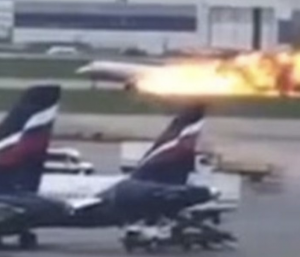
41 killed after Aeroflot burst into flames in Moscow



Forty-one people died after a Russian Aeroflot Sukhoi Super jet 100-95, SU1492 carrying 73 people and 5 crew made an emergency landing burst into flames after take off from Moscow’s Sheremetyevo airport at 18:02 local time (15:02 GMT) bound for Murmansk. The crew sent a distress SOS signal when “malfunctions” occurred in bad weather. After making emergency landing at the airport, the plane’s engines caught fire on the runway, Aeroflot said adding that the crew “dido everything to save the passengers”.
According to Petr Egorov, who survived the crash, the fight had just taken off and the aircraft was hit by lightening and the landing was rough.
Murmanask’s acting Governor Chibis said that the families of those killed in the fire will each receive one million Rubles (£11, 630), while the victims being treated in hospital will be given 500, 000 rubles ( £5815)..
Traditional planes, built using aluminium, are usually able to withstand lighting strikes as the shell or skin of the aircraft acts as cage, distributing the electricity without causing damage and allowing them to continue their journey safely, in addition the electronic and connections to an aircraft’s fuel tanks are heavily shielded to protect them from external electrical bursts. Burt newer aircraft are constructed using lighter materials that have low electrical conductivity such as carbon fibre, which need to be protected – often using wire mesh or foil.
